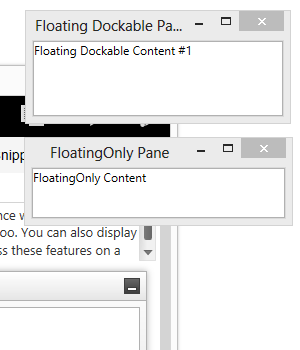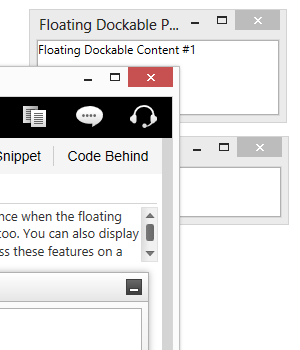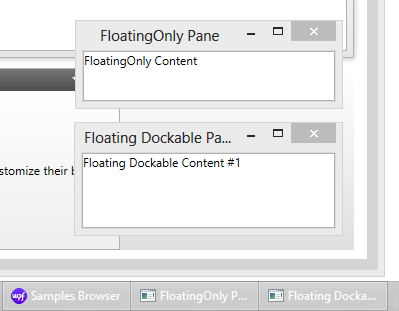<igDock:XamDockManager
UseOwnedFloatingWindows="True">
<igDock:XamDockManager.Panes>
<igDock:SplitPane
igDock:XamDockManager.InitialLocation="FloatingOnly"
igDock:XamDockManager.FloatingLocation="300,300">
<igDock:ContentPane x:Name="floatingOnly">
<locCtls:XdmSamplePaneContent Content="Some Content" />
</igDock:ContentPane>
</igDock:SplitPane>
</igDock:XamDockManager.Panes>
</igDock:XamDockManager>



